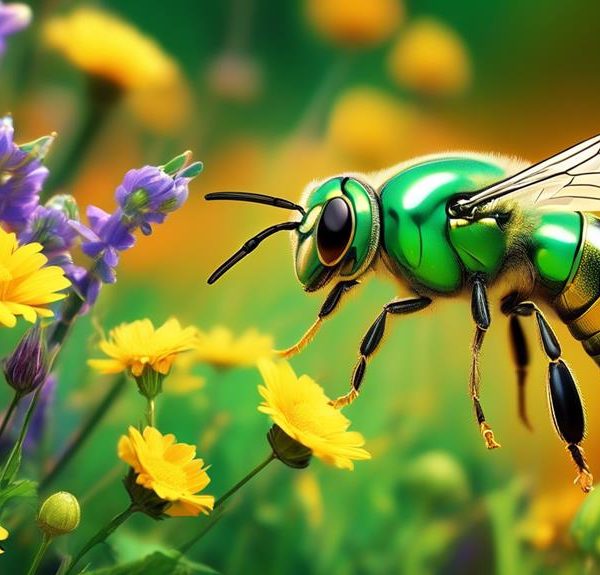Discover the surprising truth about sweat bee stings and the myth of the lingering stinger – a revelation you won't see coming!
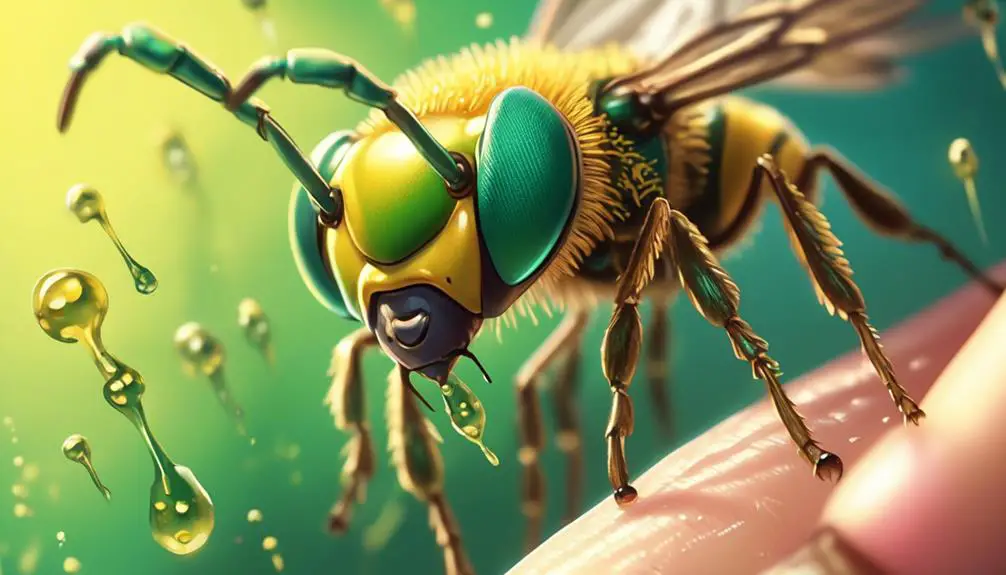
Does a Sweat Bee Leave a Stinger
Ever had the 'pleasure' of an unexpected encounter with a sweat bee? You're not alone. These tiny, often iridescent insects have a knack for buzzing around us during the sweatiest of summer days, drawn by the salt in our perspiration.
But what happens if one of these diminutive creatures decides to give you a sharp reminder of its presence? Does a sweat bee, like its more infamous cousin the honey bee, leave behind a stinger as a parting gift? Or is their sting a simple puncture, free of any lingering souvenirs?
Stick around, and let's explore this prickly topic together.
Key Takeaways
- Sweat bees do not have barbed stingers like honey bees, allowing them to sting multiple times without losing their stinger.
- The development of the sweat bee's stinger varies based on species, and the species that stings you can affect whether a stinger is left behind.
- Sweat bees are non-aggressive and primarily sting when threatened or accidentally squashed. Their stingers are primarily a defense mechanism.
- Sweat bee stings are painful but less severe compared to other bee species, and sweat bees do not leave their stinger behind after stinging.
Understanding Sweat Bee Anatomy
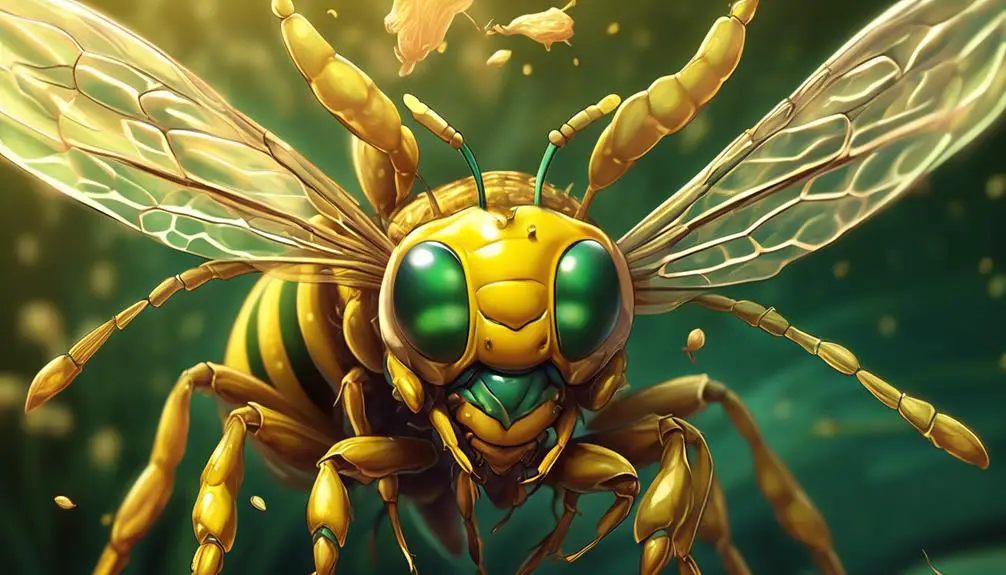
To truly grasp why a sweat bee sting may or may not leave a stinger behind, you need to peel back the layers of their unique anatomical structure. Unlike their more infamous cousins, the honey bees, sweat bees don't possess barbed stingers. This lack of barbs allows them to sting multiple times without losing their stinger or causing self-injury.
Your skin's elasticity, thickness and the angle of the sting all contribute to whether or not the stinger gets lodged. When you're stung, sweat bees drive their stinger into your skin. If the angle is just right and your skin sufficiently taut, the stinger may become stuck. However, considering their stinger's smooth shape, it's less likely to happen compared to, say, a honey bee sting.
Yet, there's another layer to consider. Sweat bees are part of the Halictidae family, which comprises both solitary and social species. The solitary ones often have less potent stings, while the social species, due to their communal living, tend to have more developed stingers. Therefore, the species of sweat bee that stings you may also factor into whether a stinger is left behind.
Sweat Bee Stinging Behavior
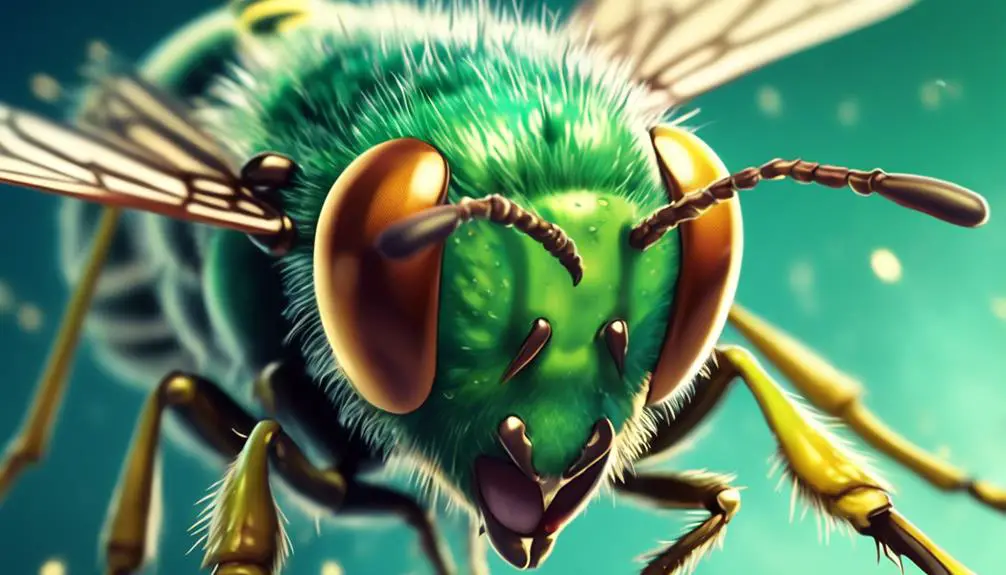
Building on the understanding of sweat bee anatomy, it's crucial to analyze their stinging behavior, as it further influences the likelihood of a stinger being left behind. Sweat bees are typically non-aggressive, unlike their more feared cousins, the hornets and wasps. They're more likely to sting only when threatened or accidentally squashed.
Despite their small size, sweat bees can inflict a sting that's painful, although less severe compared to other bee species. Their stinger, an elongated structure located at their rear, is primarily a defense mechanism. It injects venom into the skin, causing discomfort and sometimes allergic reactions.
Here's where it gets interesting: unlike honeybees, sweat bees don't leave their stinger behind post-sting. Their stinger isn't barbed but smooth, allowing them to sting repeatedly without causing self-inflicted harm. This is a critical adaptive feature that increases their survival rate as losing a stinger often results in death for many bee species.
Effects of a Sweat Bee Sting
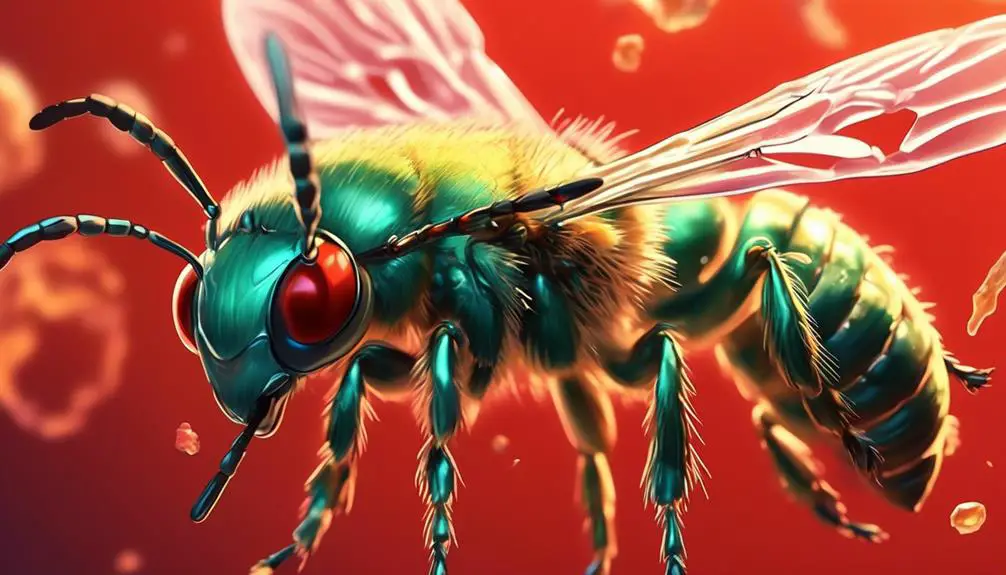
When a sweat bee stings, you'll experience immediate discomfort, marking the onset of a series of biological reactions triggered by the insect's venom. This sting injects a protein-based venom into your skin, causing cells to release histamine, a compound that your body uses to defend against injury and infections.
Histamine widens your blood vessels, causing redness and swelling around the sting site. This is your body's attempt to flush out the venom. You'll also feel an intense, sharp pain followed by itching, as nerve endings are stimulated by the histamine.
However, the severity of these symptoms can vary greatly from person to person. Factors like your personal pain tolerance and previous exposure to sweat bee venom can significantly affect your body's response. For instance, repeated exposure can lead to sensitization, causing more severe allergic reactions in some people.
In most cases, these symptoms are temporary and subside within a few hours. Yet, it's important to monitor the sting site. If redness or swelling persists, or if you experience symptoms like difficulty breathing, dizziness, or hives, you should seek medical attention immediately, as these may be signs of a severe allergic reaction to sweat bee venom.
Myths About Sweat Bees
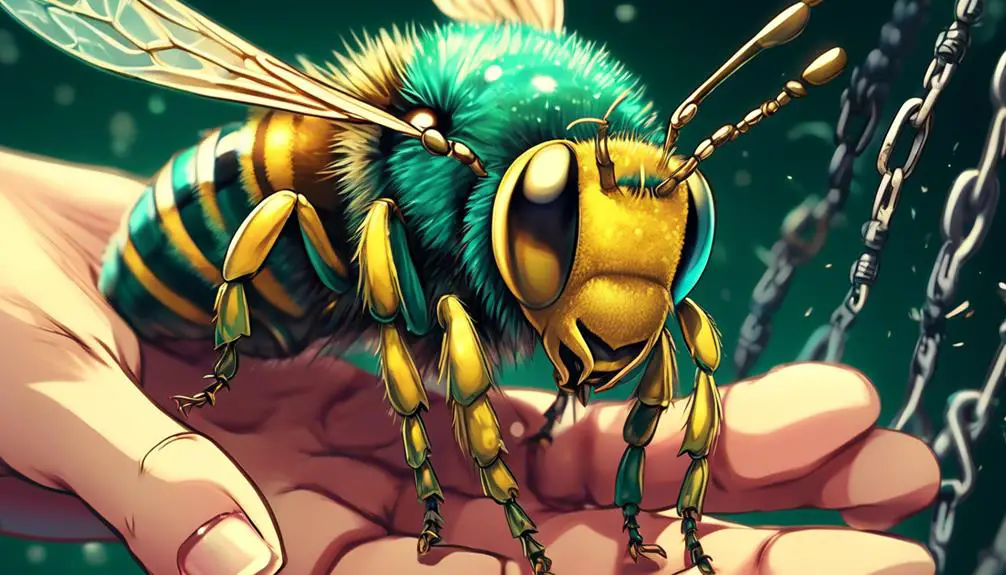
You might've heard several myths about sweat bees, but it's crucial to separate fact from fiction in order to understand these creatures better.
One common misconception is that all sweat bees sting. In reality, only female sweat bees have the ability to sting, and they only do so when threatened.
Another myth is that sweat bees aren't true bees, because of their small size and shiny, metallic colors. However, they're indeed a part of the bee family, known as Halictidae. They're simply smaller and exhibit a greater variety of colors compared to other bees.
You may also believe that sweat bees are harmful to the environment. Contrarily, they're essential pollinators, helping plants reproduce by transferring pollen. They play a crucial role within ecosystems, promoting biodiversity.
Lastly, many people think sweat bees are attracted to human sweat for its water content, but they're actually after the salt in our sweat. This is a survival strategy, as they require salt for their nutritional needs.
Dispelling these myths helps us appreciate sweat bees, understanding their nature and significance. Remember, not everything you hear about sweat bees is true, it's important to question and investigate these claims.
Preventing Sweat Bee Stings
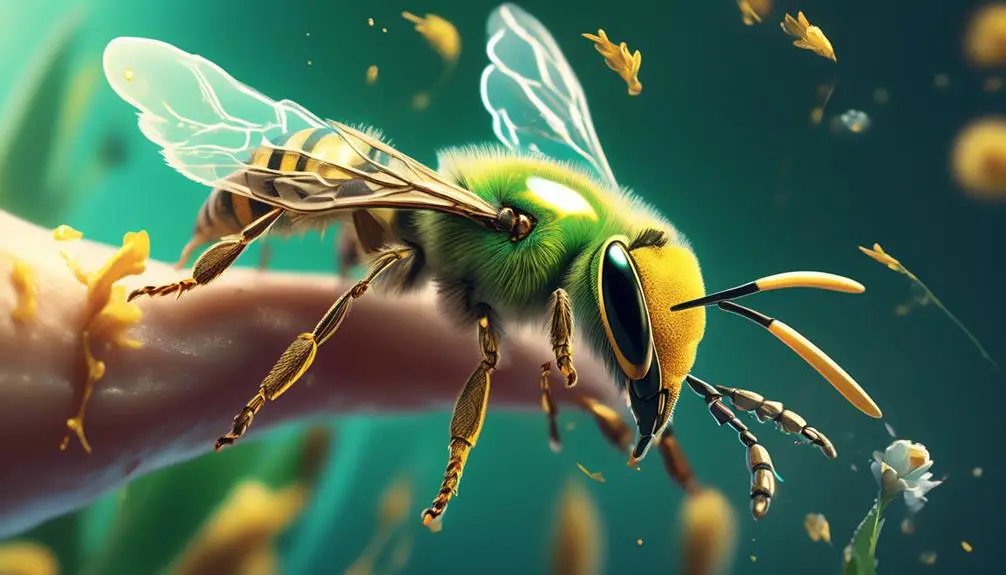
Although rare, stings from sweat bees can be prevented by understanding their behavior and adopting specific measures aimed at reducing their attraction to human sweat. You've got to remember that sweat bees are attracted to perspiration, which provides them with salt, a nutrient they need. This fact gives you the first clue to prevention: minimize sweat. Avoid strenuous activities on hot, humid days when these bees are most active.
Wearing light-colored clothing can also help, as sweat bees are drawn to dark or bright colors. It's advisable to avoid wearing floral perfumes or scented lotions that may attract them. In addition, it's prudent to cover food and drinks outdoors, which can draw in these bees.
If you're in an area with a high population of sweat bees, consider using an insect repellent. However, research shows mixed results on their effectiveness against these bees, so it's not a guaranteed solution.
Lastly, maintaining a well-kept yard can reduce the likelihood of sweat bee nests. These bees often nest in the ground, so regular mowing and removing potential nesting sites, like piles of leaves or compost, can discourage their presence.
Conclusion
In conclusion, don't fret too much about sweat bees. Yes, they can sting, but unlike some bees, they don't leave their stinger behind. The effect of their sting is usually mild, contrary to popular myth.
However, it's still best to avoid provoking them. By understanding their behavior and taking preventive measures, you can minimize your chances of experiencing a sweat bee sting.
Stay informed, stay safe, and respect these fascinating creatures.

